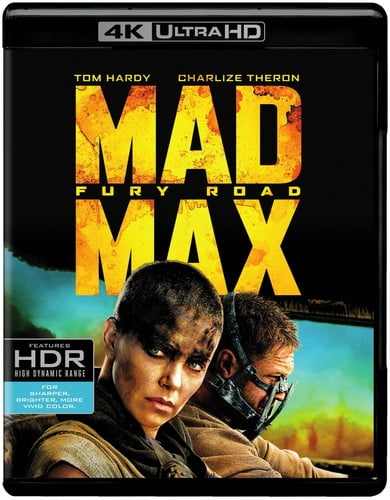

- MAD MAX FURY ROAD 4K REAL OR FAKE MOVIE
- MAD MAX FURY ROAD 4K REAL OR FAKE PROFESSIONAL
- MAD MAX FURY ROAD 4K REAL OR FAKE TV
MAD MAX FURY ROAD 4K REAL OR FAKE TV
Standard old HDR10 doesn’t have any dynamic metadata, though, so your TV just has to decide for itself. These modern HDR standards use dynamic metadata to help TVs adjust on a per-scene or frame-by-frame basis. The Wild West of HDR standards has also created a format war between competing technologies, like Dolby Vision and HDR10+.

The upshot is you’ll get a fairly consistent image across a huge range of displays. An image that’s graded more conservatively, with bright elements capped at 200 or 300 nits, will appear less punchy and vibrant.
MAD MAX FURY ROAD 4K REAL OR FAKE MOVIE
The alternative is to grade your movie so it doesn’t exceed the capabilities of most displays. However, directors also rely on a display’s ability to tone map correctly, which adds an element of risk. Bright elements will still be impactful, though, thanks to the contrast between the highlights and shadows. While HDR10 as a standard is intended to be mastered at 1,000-nits peak brightness, not every TV can achieve those levels.Ī display that can’t hit those lofty targets will tone map an image that exceeds its capabilities. The closest thing to a baseline standard is HDR10, which now enjoys good support from both TV manufacturers and movie studios. HDR video hasn’t yet been standardized in any meaningful way. Two factors have contributed to the situation we covered above: the technical limitations of modern displays, and creative intent. So, movie fans have to rely on reviewers like Teoh, who have access to HDR mastering tools, to get the whole story. Blu-ray packaging doesn’t include any info about peak luminance, and most buyers wouldn’t understand the terminology anyway. Whether this validates the term “fake HDR” remains a matter of opinion, though.

The reluctance to splash out on HDR effects is intentional. As these are major releases from some of Hollywood’s biggest studios, it’s clear that colorists and directors know exactly what they’re doing. This doesn’t mean a film looks bad the image just doesn’t “leap off” the screen as it does in other releases. Some reviewers and Blu-ray collectors feel these “fake HDR” releases have been hamstrung by underwhelming peak brightness. Even LG’s relatively “dim” OLED panels manage around 700 nits. However, because they lack the flashes of peak brightness shown in many other productions, some perceive these releases as “fake HDR.”Īs another reference, a super-bright LCD, like the Vizio P-Series Quantum X, can hit a peak brightness of well over 2,000 nits. This means they still deliver a better-quality image than SDR. These HDR releases use a 10-bit (12 in some instances) color depth. Teoh also found that the Blade Runner 2049 4K Blu-ray barely rises above 200 nits, making it “an SDR movie in an HDR container.”
MAD MAX FURY ROAD 4K REAL OR FAKE PROFESSIONAL
It refers to the reluctance of studios to grade their HDR productions to sufficient peak brightness and make the images pop.Īccording to Vincent Teoh, a professional display calibrator and reviewer, the 4K Blu-ray of Star Wars: The Last Jedi hits a maximum peak brightness of 250 nits, with the sun being graded at only 200. The term “Fake HDR” has been thrown around YouTube, Reddit, and other platforms in the wake of a few high-profile Blu-ray releases. RELATED: HDR Format Wars: What's the Difference Between HDR10 and Dolby Vision? What Is “Fake HDR”? HDR video is something you have to see to truly appreciate, but its improvement over SDR can be vast. The additional brightness makes elements like these look much closer to how they would in real life, creating a more immersive viewing experience. This means bright objects, like the sun, a flashlight, or gunfire, can really pop when viewed on an HDR-capable display. It stipulates that content be mastered at 1,000 nits, as opposed to the traditional 100 nits (recently revised to around 200) for standard-definition content. The vast majority of HDR-capable TVs come with the basic HDR10 standard built-in. HDR also adds luminance or peak brightness.


 0 kommentar(er)
0 kommentar(er)
